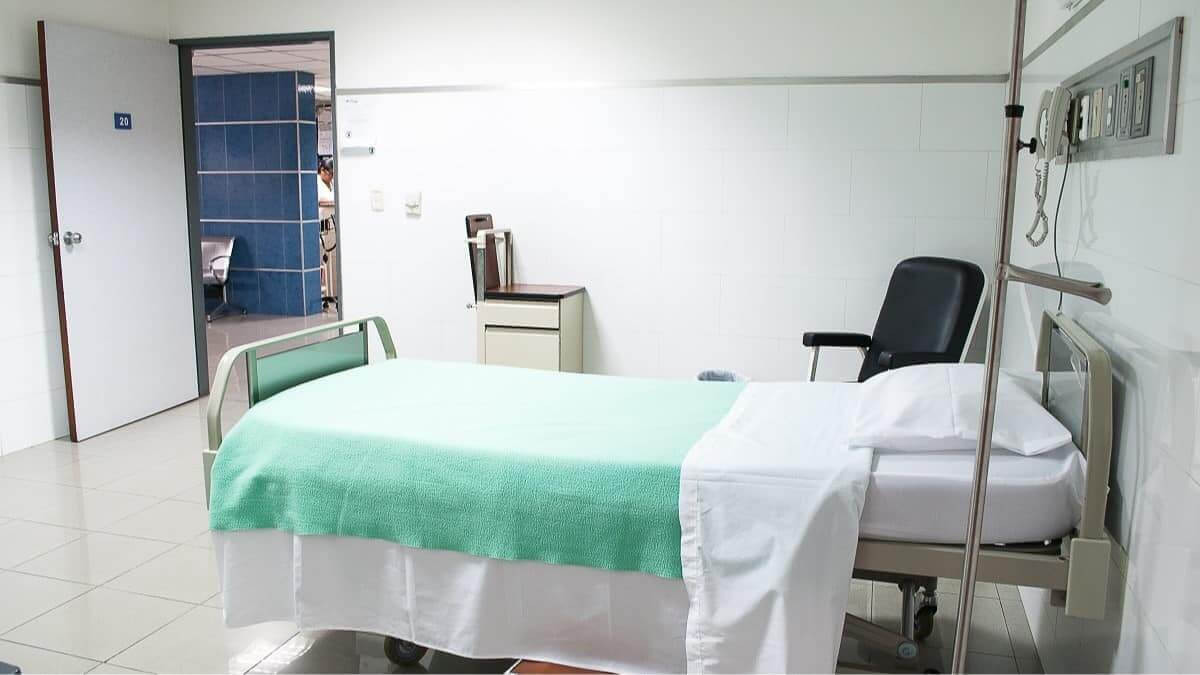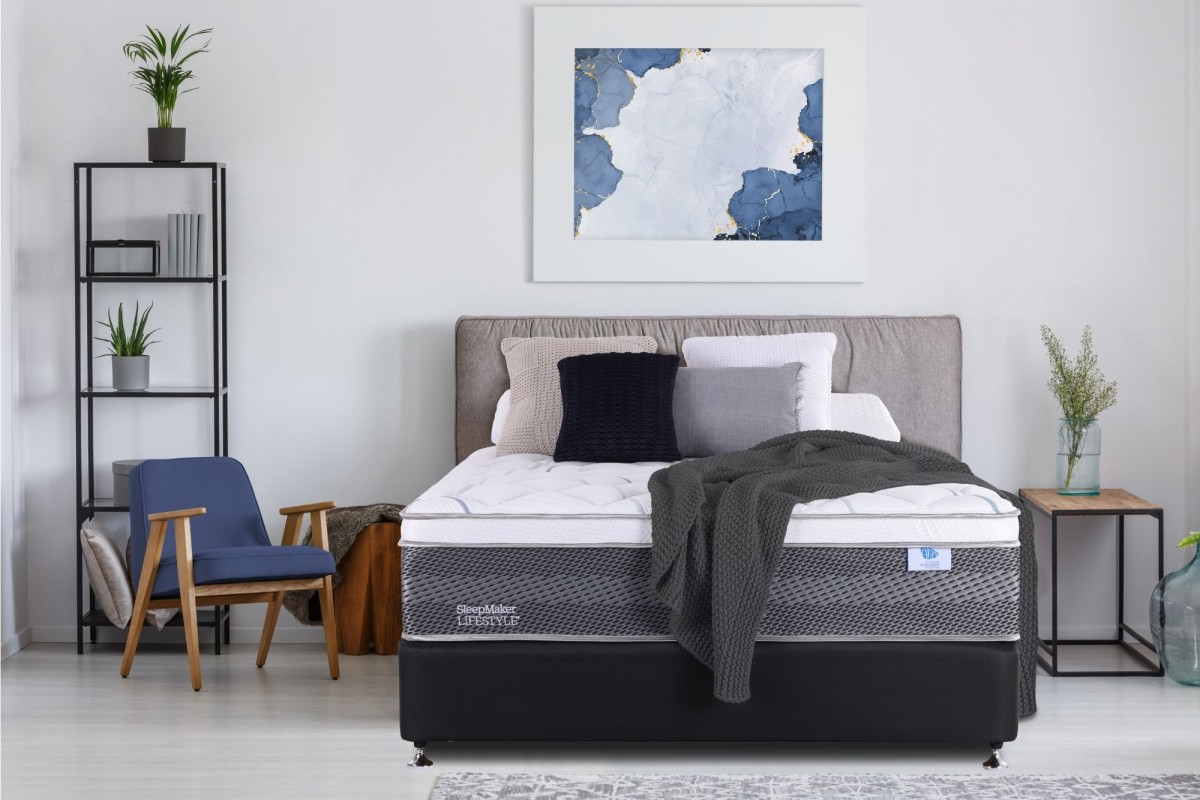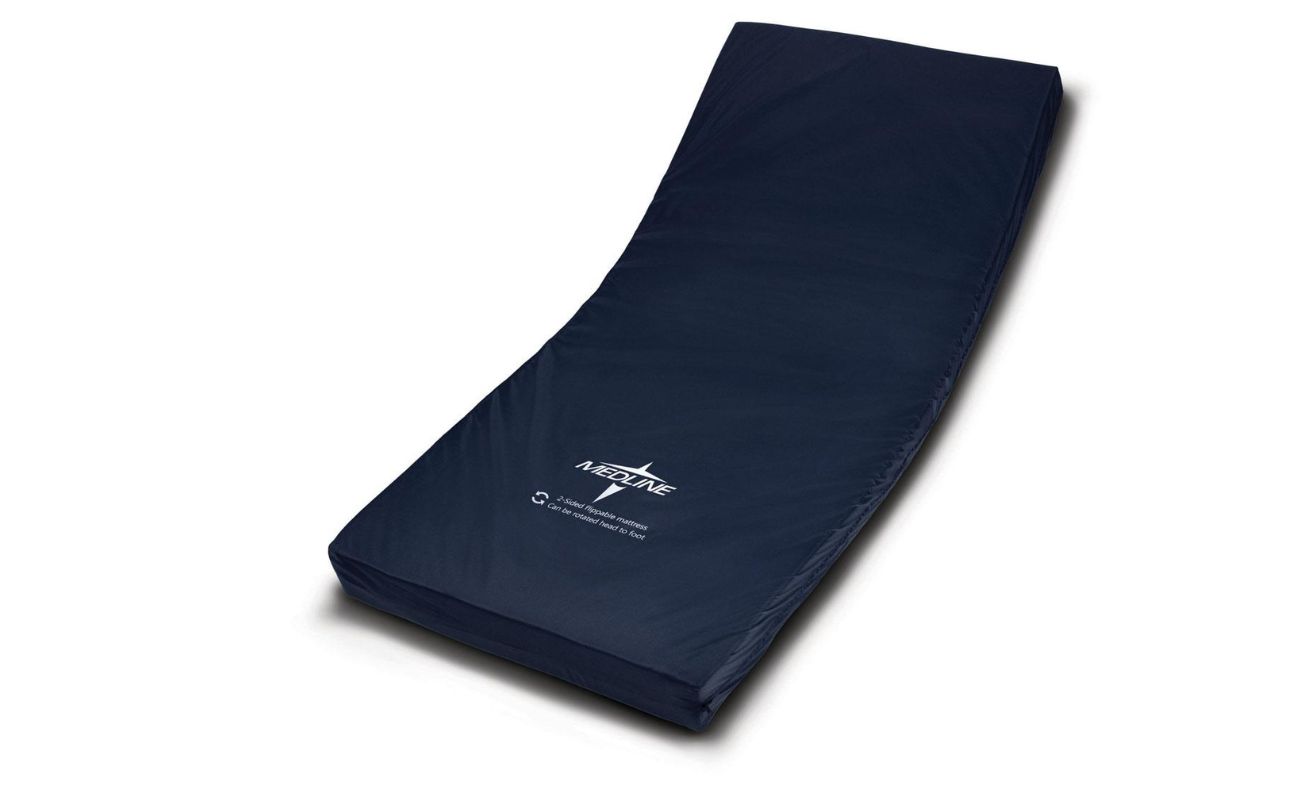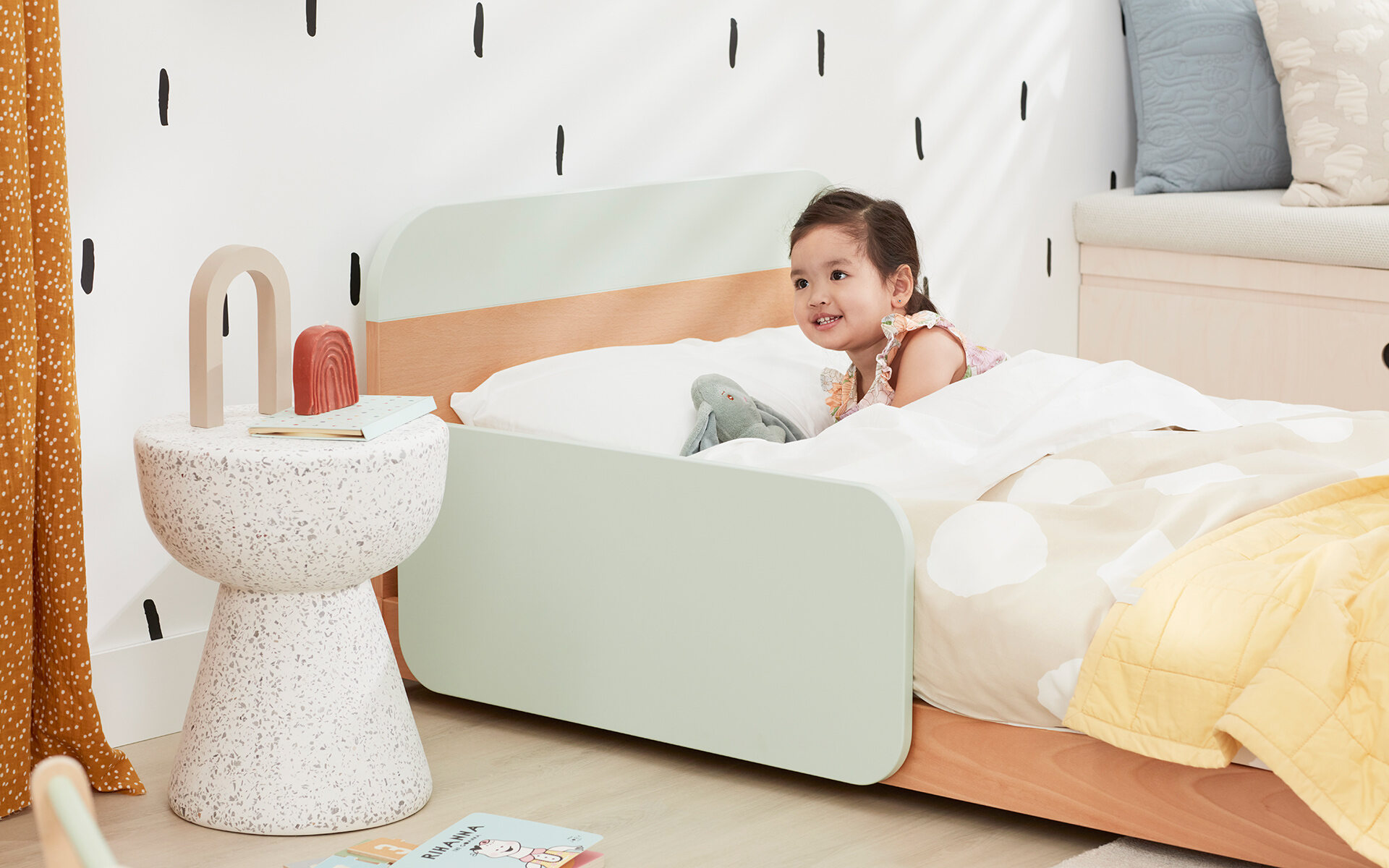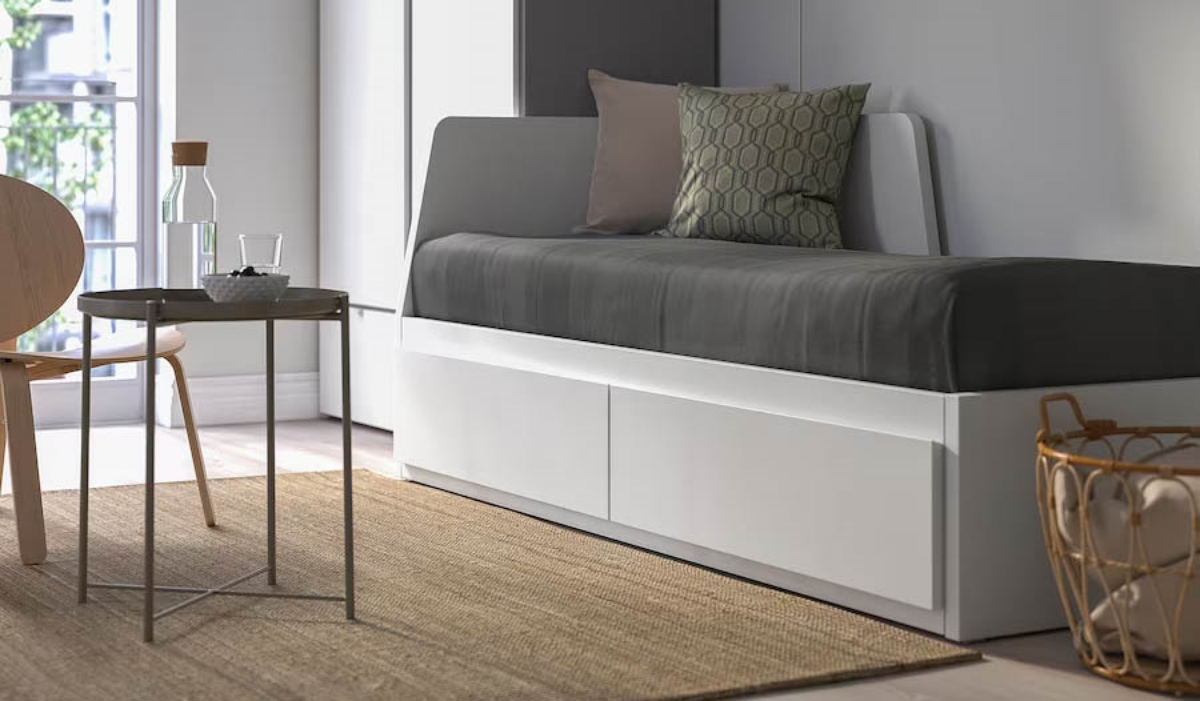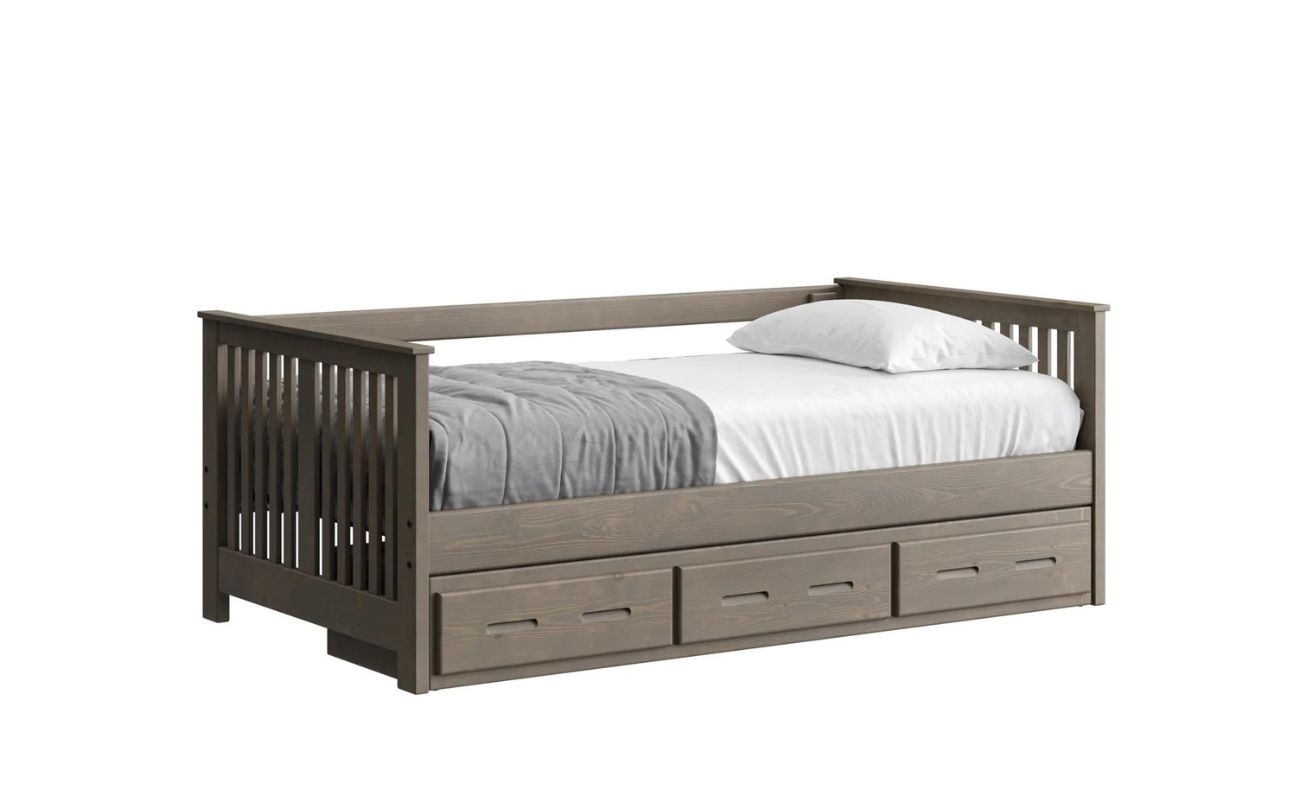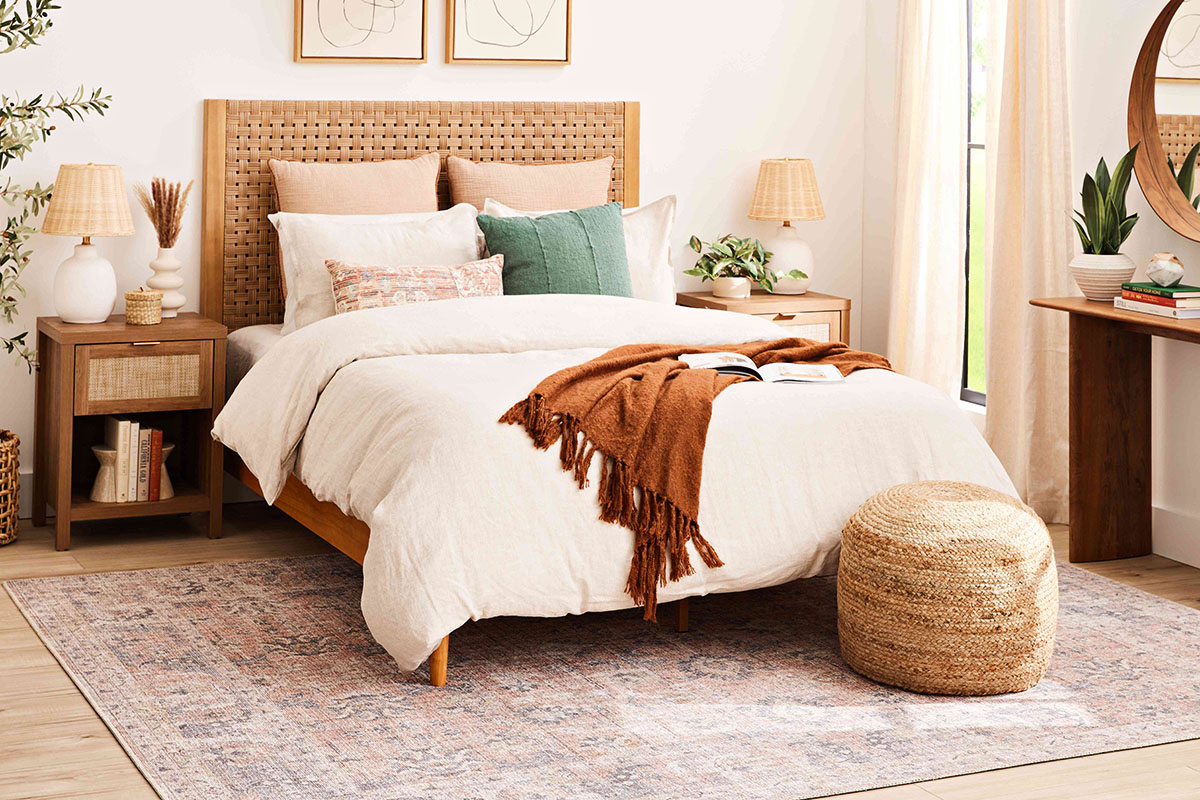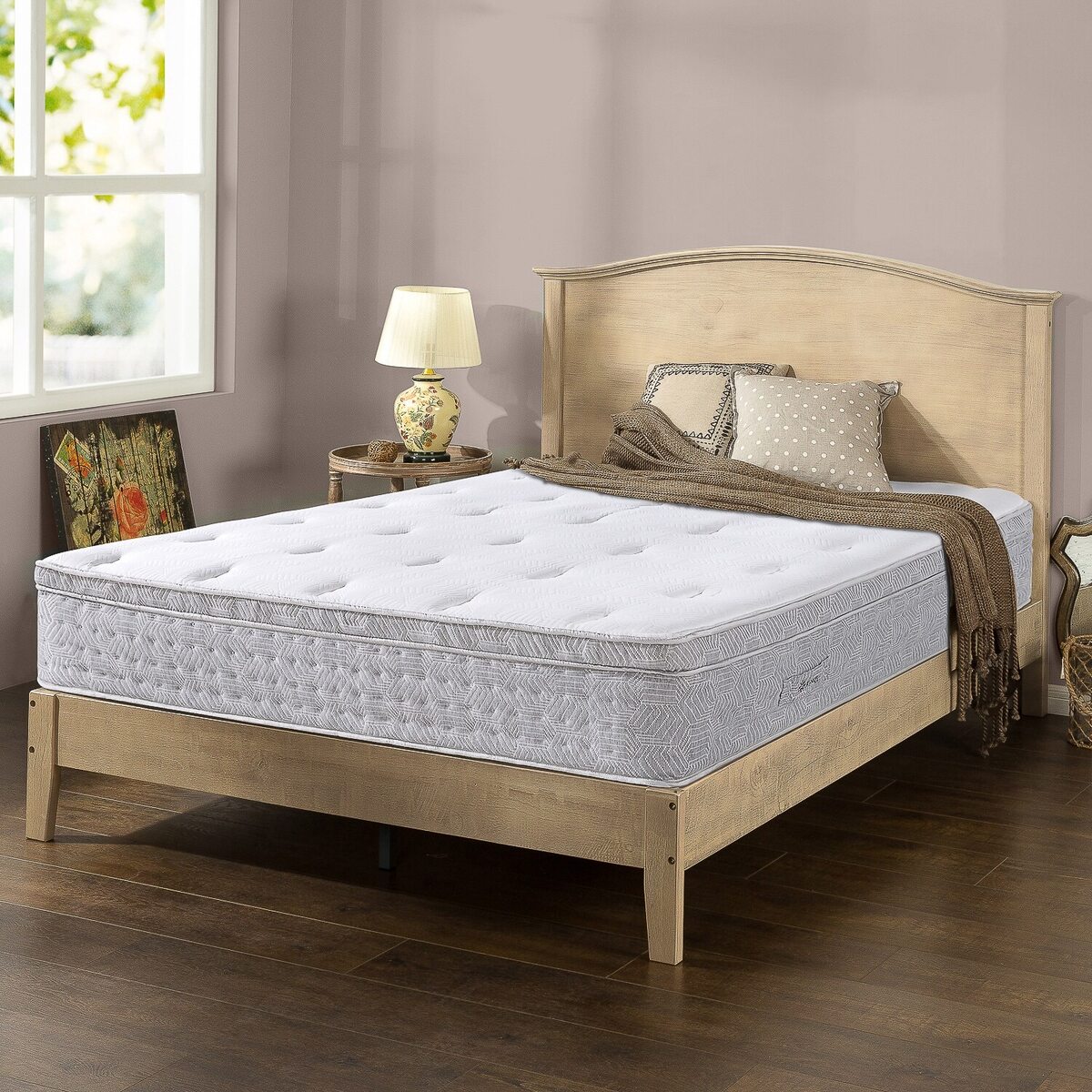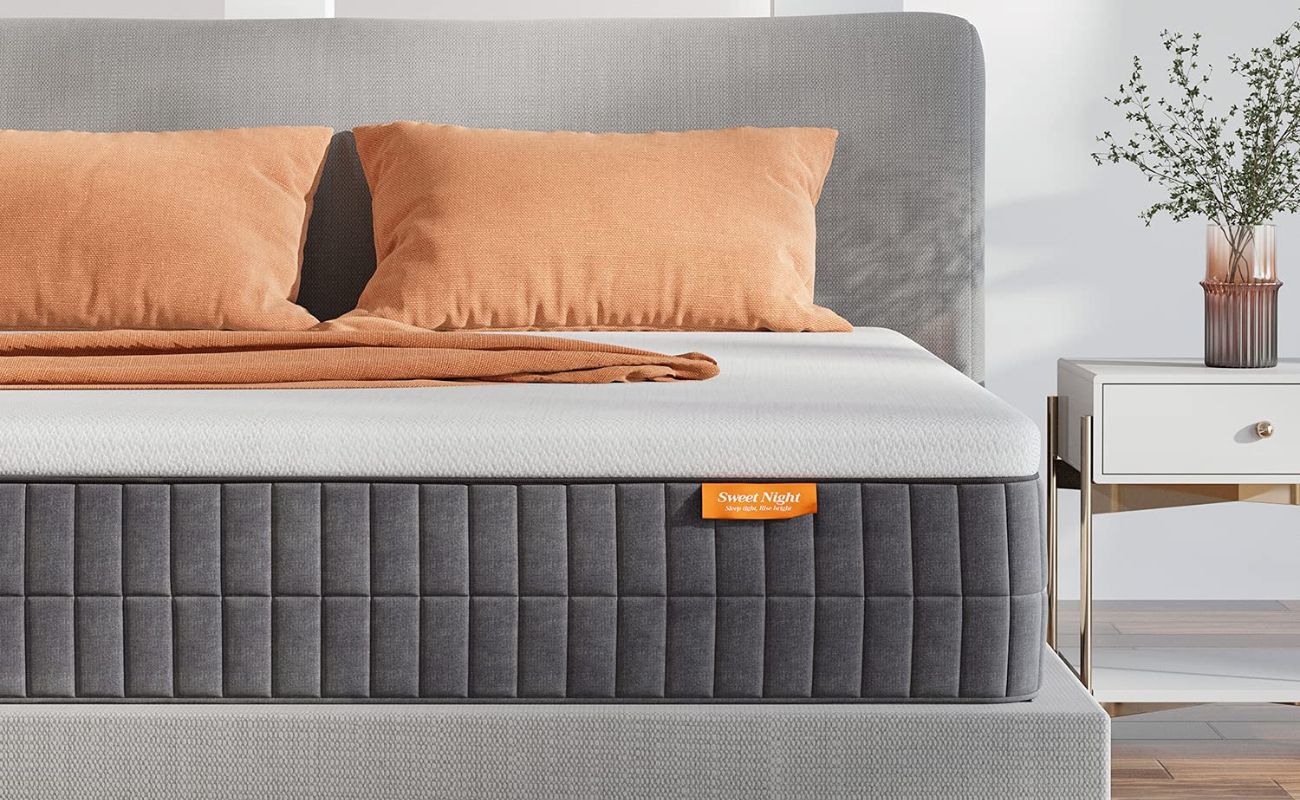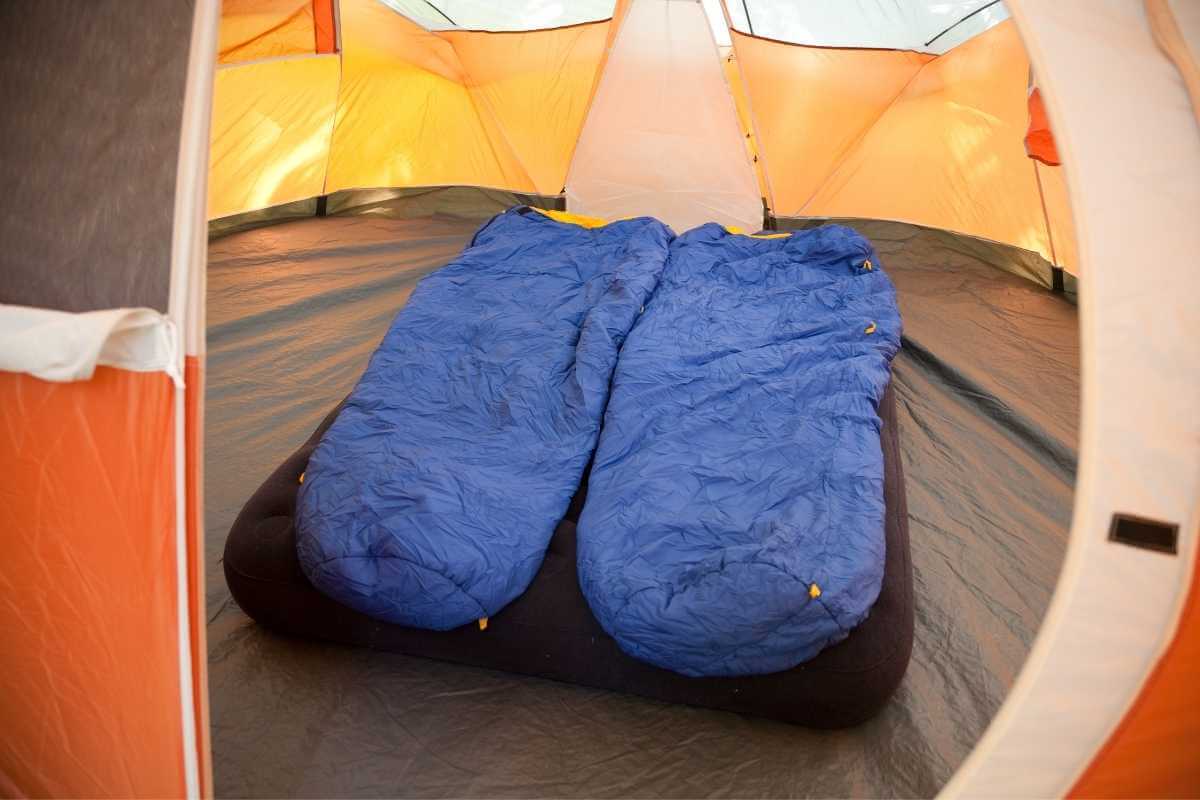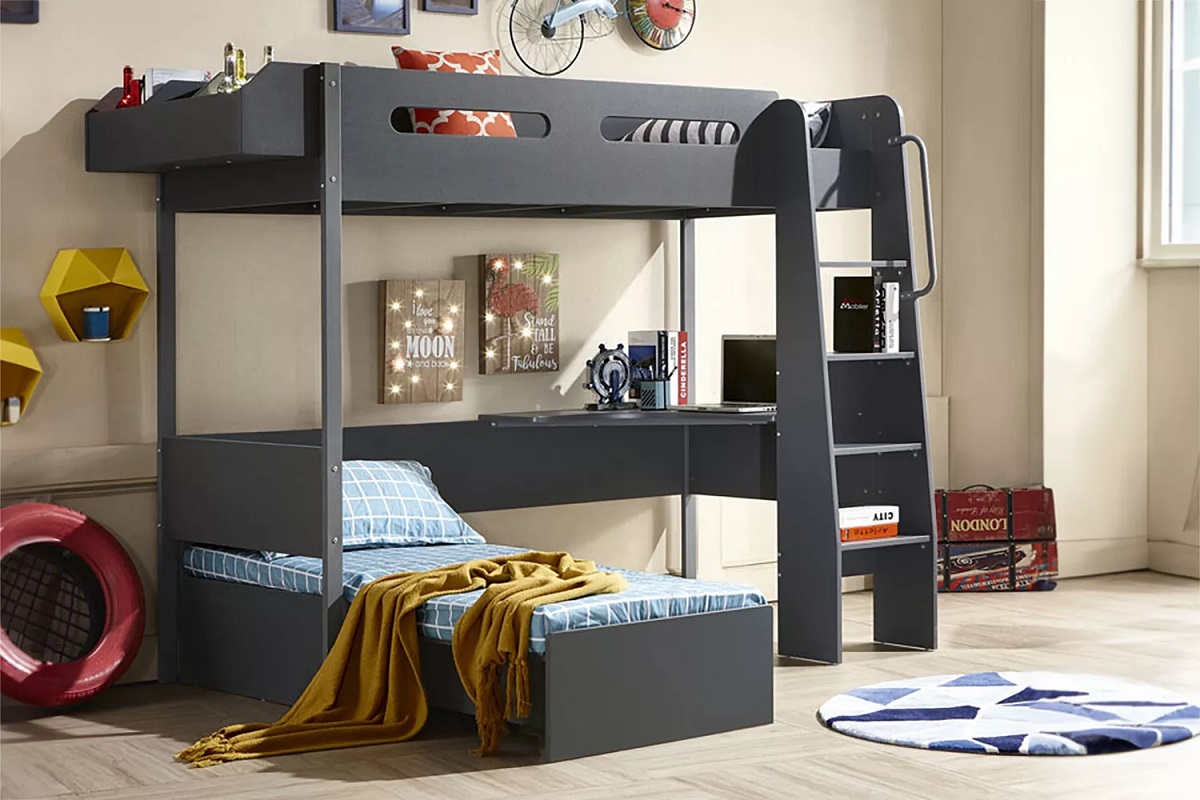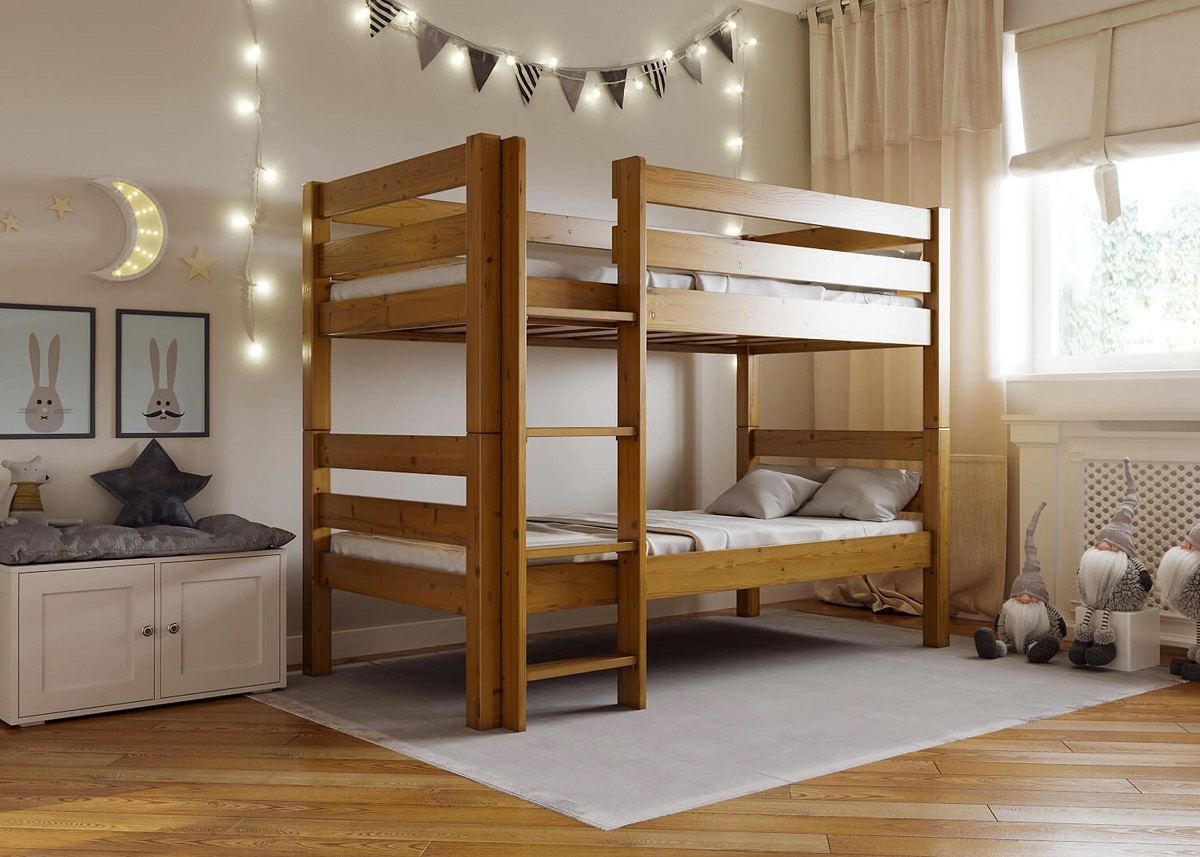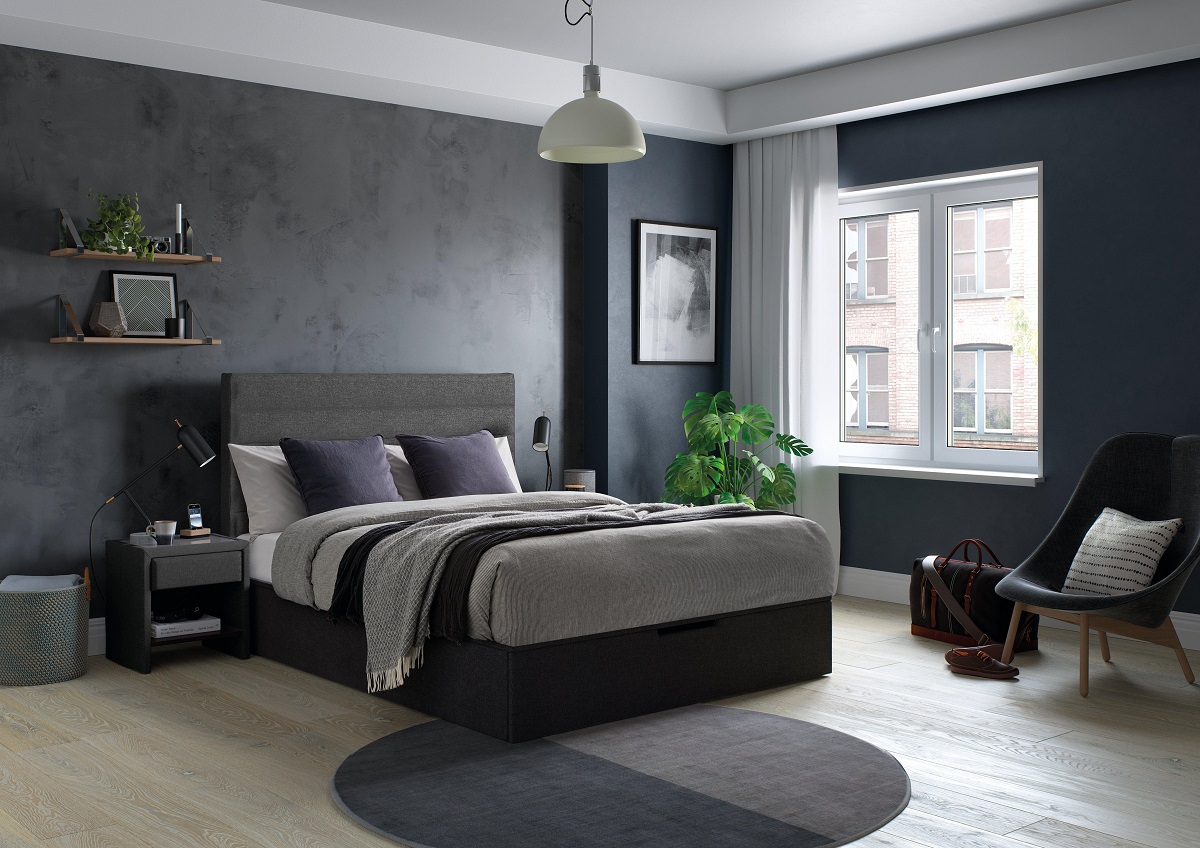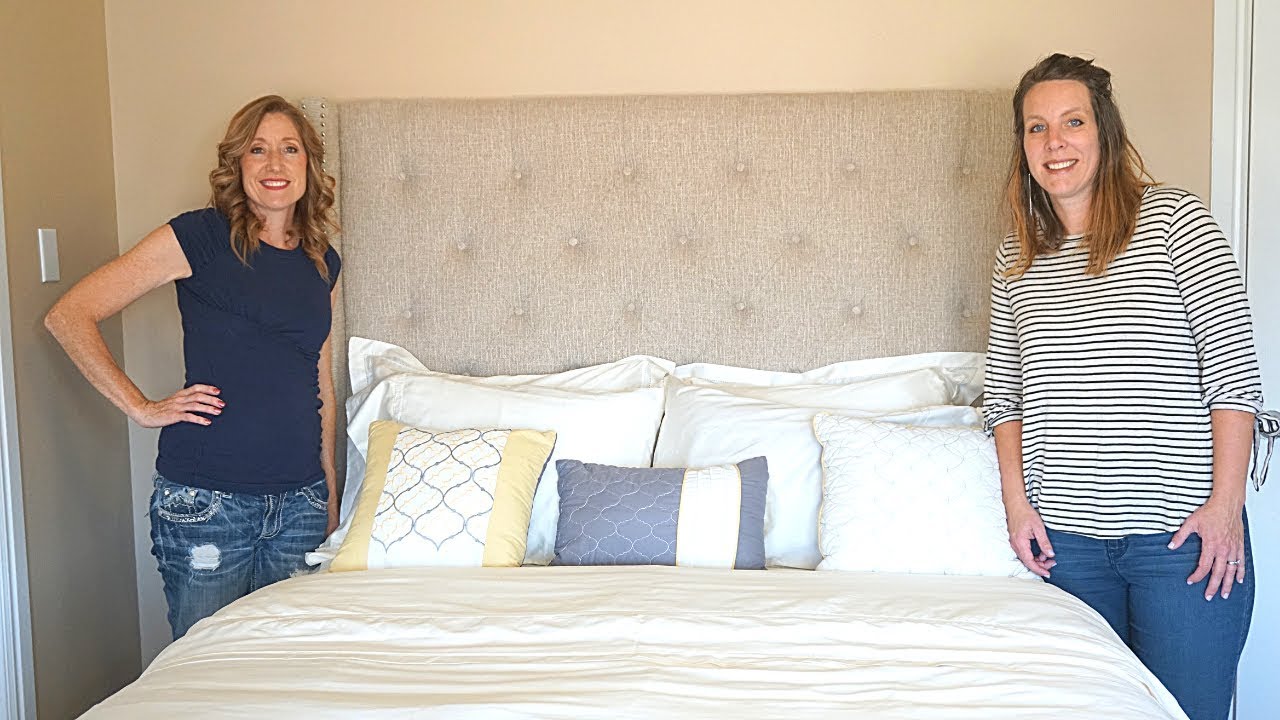Home>Furniture>Bedroom Furniture>What Size Mattress Fits A Bunk Bed
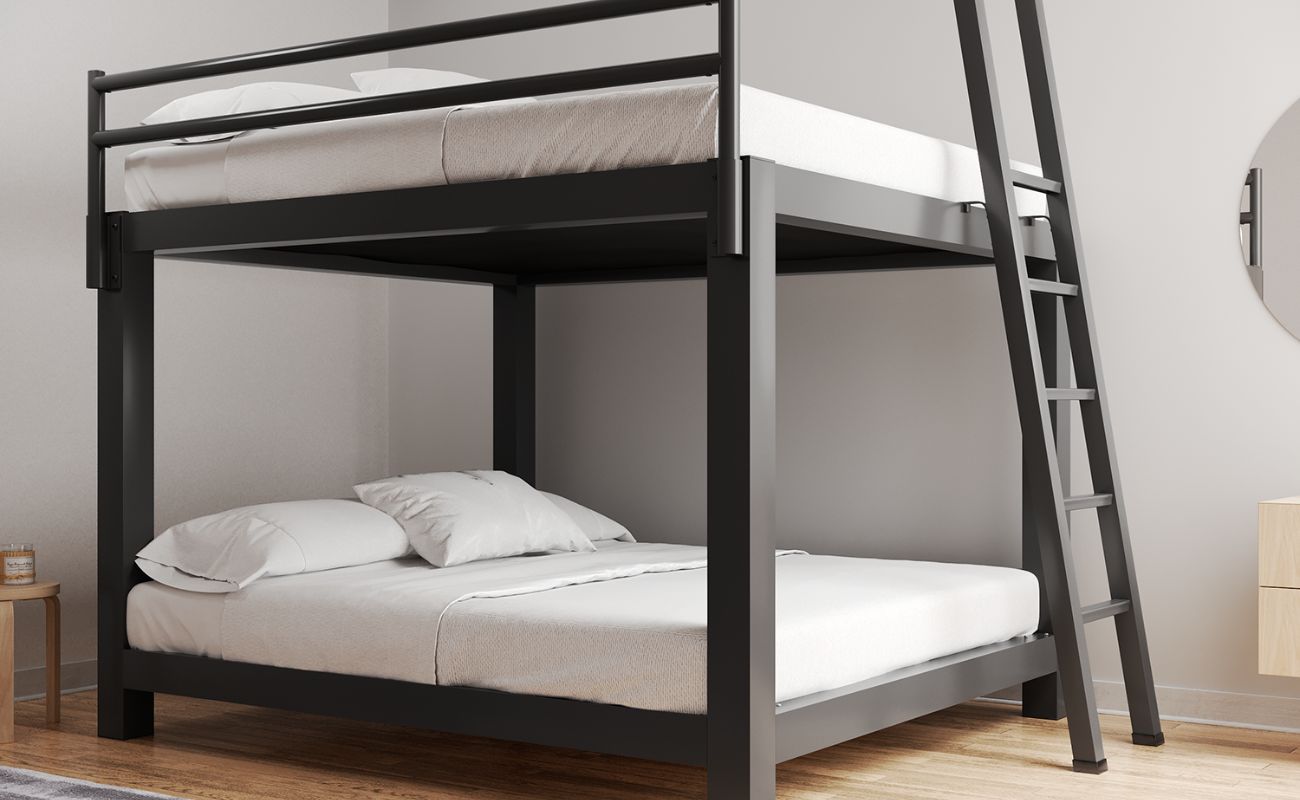

Bedroom Furniture
What Size Mattress Fits A Bunk Bed
Modified: January 6, 2024
Discover the perfect size mattress for your bunk bed in our comprehensive guide. Find the ideal bedroom furniture solution for your space.
(Many of the links in this article redirect to a specific reviewed product. Your purchase of these products through affiliate links helps to generate commission for Storables.com, at no extra cost. Learn more)
Introduction
Choosing the right size mattress for your bunk bed is crucial for a comfortable and safe sleeping experience. Bunk beds are a popular choice for saving space in small bedrooms or accommodating multiple sleepers in shared rooms. However, selecting the appropriate mattress size can sometimes be confusing, as there are several options to consider.
In this article, we will explore the standard sizes of bunk beds and discuss the dimensions of twin, twin XL, and full mattresses that are commonly used in bunk beds. We will also cover important factors to consider when choosing a mattress for your bunk bed and highlight safety considerations to ensure a secure sleeping environment for everyone using the bed.
So, if you’re in the process of buying a new bunk bed or upgrading your current mattress, read on to discover the right mattress size for your bunk bed and make an informed decision that meets your needs and preferences.
Key Takeaways:
- Choose the right mattress size for your bunk bed to ensure a comfortable and safe sleeping experience. Consider factors like size, comfort, support, and material to make an informed decision that meets your needs and preferences.
- Prioritize safety when using bunk beds by ensuring the mattress fits properly, sturdy guardrails are in place, and weight limits are adhered to. Regularly inspect the bed and mattress for wear or damage to maintain a secure sleeping environment.
Read more: What Size Mattress For A Bunk Bed
Standard Bunk Bed Sizes
Bunk beds come in various sizes to accommodate different sleepers and room dimensions. The most common bunk bed sizes are twin, twin XL, and full. Let’s take a closer look at each of these standard sizes:
- Twin Size: A twin-sized bunk bed is designed to accommodate a single mattress. Twin bunk beds are a popular choice for children’s bedrooms or smaller guest rooms. The dimensions of a twin-size bunk bed typically measure 39 inches wide by 75 inches long.
- Twin XL Size: Similar to twin bunk beds, twin XL bunk beds are designed to accommodate a single mattress. However, twin XL mattresses are longer than standard twin mattresses, making them more suitable for taller individuals or teenagers. The dimensions of a twin XL bunk bed usually measure 39 inches wide by 80 inches long.
- Full Size: Full-sized bunk beds provide more sleeping space than twin-sized beds, making them a popular choice for teenagers or adults who prefer more room to stretch out. The dimensions of a full-size bunk bed typically measure 54 inches wide by 75 inches long.
When searching for a bunk bed, it’s important to check the manufacturer’s specifications to ensure that your desired mattress size will fit properly. Some bunk beds may have custom or non-standard sizes, so it’s essential to double-check the measurements to avoid any sizing issues.
Now that we have a better understanding of the standard bunk bed sizes, let’s explore the dimensions of the mattresses that fit these bunk beds.
Twin Mattress Dimensions
A twin mattress is the most common and widely used mattress size for bunk beds. It offers a comfortable sleeping surface for children, teenagers, and even adults who prefer a compact bed size. The standard dimensions of a twin mattress are 39 inches wide by 75 inches long.
It is important to note that the actual dimensions of a twin mattress may vary slightly depending on the brand and specific model. Therefore, it is always advisable to measure the mattress and compare it with the bunk bed frame’s dimensions to ensure a proper fit.
Here are some key considerations to keep in mind when choosing a twin mattress for your bunk bed:
- Thickness: Twin mattresses come in various thickness options, ranging from 6 to 14 inches. Thicker mattresses offer more cushioning and support, but they may not be suitable for top bunks with low guardrails. It is important to consider the space between the top of the mattress and the guardrail to ensure safety and prevent any risk of falling.
- Firmness: Twin mattresses are available in different levels of firmness, including plush, medium, and firm. The choice of firmness depends on personal preference and comfort requirements.
- Material: Twin mattresses are available in different materials, including innerspring, memory foam, latex, or hybrid constructions. Each material has its own unique features and benefits, so it’s essential to choose one that suits your sleeping preferences.
- Support and Durability: Look for a twin mattress that provides adequate support for your body and is durable enough to withstand the wear and tear of everyday use. Consider factors such as coil count, foam density, and mattress construction to ensure long-lasting comfort.
By considering these factors and comparing the dimensions of the twin mattress with your bunk bed’s specifications, you can find the perfect fit for your bunk bed and ensure a comfortable sleeping experience.
In the next section, we will explore the dimensions of a twin XL mattress, which is another popular option for bunk beds.
Twin XL Mattress Dimensions
The twin XL mattress is a slightly longer version of the standard twin mattress, providing additional length for taller individuals or teenagers. Twin XL mattresses are commonly used in bunk beds and dorm rooms where space is limited, but there is a need for a longer sleeping surface. The dimensions of a twin XL mattress are 39 inches wide by 80 inches long.
Similar to twin mattresses, twin XL mattresses come in various thickness options, firmness levels, and materials. When choosing a twin XL mattress for your bunk bed, keep in mind the following considerations:
- Length: The extra 5 inches in length provided by a twin XL mattress can make a significant difference for taller individuals. Ensure that your bunk bed can accommodate the length of a twin XL mattress without compromising safety or stability.
- Thickness: Consider the overall height of the bunk bed and the space between the top of the mattress and the guardrail to prevent any risks of injury. Thicker mattresses may require higher guardrails or additional safety features.
- Comfort and Support: Choose a twin XL mattress with the appropriate level of firmness and support. This can vary depending on personal preferences and specific sleep needs.
- Material: Consider the different mattress materials available, such as memory foam, innerspring, latex, or hybrids. Each material has its own advantages in terms of pressure relief, motion isolation, and overall comfort.
By taking these factors into account and comparing the dimensions of a twin XL mattress with your bunk bed’s specifications, you can ensure a proper fit and a comfortable sleeping experience for taller individuals or those who prefer a slightly longer mattress.
Now that we have explored the dimensions of twin and twin XL mattresses for bunk beds, let’s move on to discussing full-size mattresses and their suitability for bunk beds.
When choosing a mattress for a bunk bed, make sure to measure the dimensions of the bed frame to ensure a proper fit. Most bunk beds require a standard twin size mattress, but some may accommodate a full size. Always check the manufacturer’s recommendations for the best fit.
Full Mattress Dimensions
A full-size mattress, also known as a double mattress, provides more sleeping space compared to twin or twin XL mattresses. It is an ideal option for bunk beds that will accommodate older children, teenagers, or adults who require additional room to stretch out comfortably. The dimensions of a full mattress are 54 inches wide by 75 inches long.
When considering a full-size mattress for your bunk bed, it’s important to keep the following factors in mind:
- Width: Full mattresses offer more width compared to twin options, providing ample space for individuals who prefer more room to move around during sleep.
- Space Considerations: Ensure that the bunk bed frame can accommodate the width of a full mattress without compromising safety or stability. This includes considering the space between the bunk bed rails and the mattress’s edge.
- Thickness: Like other mattress sizes, full mattresses are available in various thickness options. Consider the height of the bunk bed, including the distance between the top of the mattress and the guardrail, to ensure a proper fit.
- Comfort and Support: Choose a full-size mattress with the right level of firmness and support suitable for the intended user. Consider factors such as sleeping position, weight distribution, and personal preferences.
- Materials: Full mattresses come in different materials, including memory foam, innerspring, latex, or hybrid constructions. Each type of material offers unique features in terms of comfort, support, and durability.
It is crucial to measure the available space in the bunk bed and compare it with the dimensions of a full-size mattress before making a purchase. By considering these factors and ensuring a proper fit, you can enjoy a comfortable and spacious sleep surface within your bunk bed.
Next, let’s explore some important factors to consider when choosing a mattress for your bunk bed.
Read more: What Size Of Mattress Fits In A Truck Bed
Factors to Consider When Choosing a Mattress
When selecting a mattress for your bunk bed, there are several key factors to consider. These factors will help ensure that you choose a mattress that is not only the right size but also offers optimal comfort and support. Here are some important factors to keep in mind:
- Size: As discussed earlier, determine the appropriate mattress size based on the dimensions of your bunk bed. Whether you opt for a twin, twin XL, or full-size mattress, make sure it fits securely within the bed frame.
- Comfort: Choose a mattress that provides the level of comfort you desire. This can vary from person to person, so consider whether you prefer a softer, medium, or firmer mattress. Additionally, if you have any specific comfort requirements, such as pressure relief or posture support, seek out mattresses that cater to these needs.
- Support: A mattress that offers proper support is essential for a good night’s sleep. Look for mattresses that provide adequate support to your body, especially in areas such as the lower back, hips, and shoulders. This will help maintain a neutral spine alignment and reduce the risk of discomfort or pain.
- Material: Mattresses come in various materials, each with its own unique characteristics. Common options include memory foam, latex, innerspring, and hybrid mattresses. Consider factors such as breathability, motion isolation, pressure relief, and durability when selecting the material that suits your needs.
- Budget: Set a budget for your mattress purchase. Prices can vary significantly depending on the brand, material, and features of the mattress. It is important to find a balance between your budget and the quality and features you desire in a mattress.
- Reviews and Ratings: Before making a final decision, research and read reviews of the mattresses you are considering. This can provide insights into the experiences of other customers and help you gauge the overall quality and performance of the mattress.
By considering these factors, you can narrow down your options and choose a mattress that not only fits your bunk bed but also meets your comfort and support needs. Remember to take your time and explore different options to find the best mattress for you.
Now, let’s move on to discussing some safety considerations for bunk beds.
Safety Considerations for Bunk Beds
Ensuring the safety of bunk beds is of utmost importance, especially when it comes to mattresses. Here are some key safety considerations to keep in mind when using mattresses in bunk beds:
- Proper Fit: Choose a mattress that fits snugly within the bunk bed frame. There should be no gaps or spaces between the mattress and the bed frame, as these can pose a potential hazard for children or individuals to get stuck or trapped.
- Guardrails: Check that the bunk bed has sturdy, properly installed guardrails on all sides of the top bunk. This will prevent accidental falls during sleep and provide a safe sleeping environment. The guardrails should have a minimum height of five inches above the top of the mattress for optimal safety.
- Mattress Thickness: Consider the thickness of the mattress in relation to the height of the guardrails. A mattress that is too thick may reduce the overall height of the guardrails and compromise safety. Ensure that there is enough space between the top of the mattress and the guardrails to prevent the risk of falling.
- Weight Limit: Be aware of the weight limit specified by the manufacturer of the bunk bed. This applies to the combined weight of the mattress and the individuals using the bed. Exceeding the weight limit can lead to structural instability, posing a safety risk.
- Safety Certifications: Look for bunk beds and mattresses that meet safety standards and certifications. Check for certifications such as ASTM International or the Consumer Product Safety Commission (CPSC) to ensure that the products have undergone rigorous testing for safety and durability.
- Regular Inspections: Regularly inspect the bunk bed and mattress for any signs of wear, damage, or loose components. Ensure that all bolts, screws, and other fasteners are tight and secure. If you notice any issues, repair or replace them immediately to maintain a safe sleeping environment.
By following these safety considerations, you can ensure that your bunk bed, along with the mattress, provides a secure and comfortable sleeping space for everyone using it.
Now, let’s summarize the key points discussed in this article.
Conclusion
Choosing the right mattress size for your bunk bed is essential for a comfortable and safe sleeping experience. Whether you have a twin, twin XL, or full-size bunk bed, understanding the dimensions and factors to consider when selecting a mattress can help you make an informed decision.
When choosing a mattress, consider factors such as size, comfort, support, material, and your budget. Take the time to research and read reviews to ensure you choose a mattress that fits your needs and preferences.
Additionally, prioritize safety when using bunk beds. Ensure that the mattress fits properly within the bed frame, and that there are sturdy guardrails on the top bunk. Regularly inspect the bed and mattress for any signs of wear or damage, and adhere to weight limits specified by the manufacturer.
By considering all these factors and following safety guidelines, you can create a comfortable and secure sleeping environment in your bunk bed. Now, you can confidently choose the right mattress size that fits your bunk bed and enjoy a restful night’s sleep for everyone using it.
Remember, a well-chosen mattress not only enhances comfort but also contributes to a healthier and happier sleep experience. Sweet dreams!
Frequently Asked Questions about What Size Mattress Fits A Bunk Bed
Was this page helpful?
At Storables.com, we guarantee accurate and reliable information. Our content, validated by Expert Board Contributors, is crafted following stringent Editorial Policies. We're committed to providing you with well-researched, expert-backed insights for all your informational needs.
